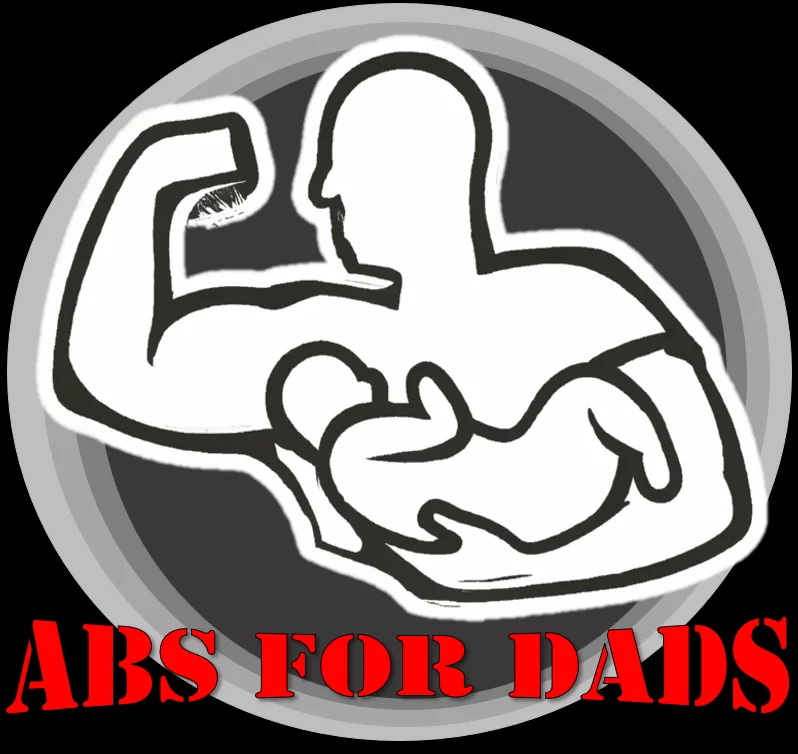THE BLOG
The Ultimate Fitness Blog for Dads
TOPICS
Welcome to Abs For Dads, your premier resource for time-efficient fitness solutions tailored for busy fathers. Discover practical tips and expert advice to transform your health and fitness, seamlessly integrating into your demanding schedule.

Fitness
Explore our curated fitness tips and routines designed to maximize efficiency for the modern dad. Whether at home or the gym, our time-sensitive workouts ensure you achieve optimal results with minimal time investment.

Nutrition
Unlock the secrets of hassle-free nutrition with our easy-to-follow meal ideas and delicious recipes. Abs For Dads empowers you to make informed food choices that align with your fitness goals, promoting vitality and strength.

Lifestyle
Enhance your overall well-being with our lifestyle hacks. From stress management to effective time optimization, our blog covers a spectrum of topics ensuring you achieve success in your fitness journey.

The Garage Gains Series: At Home Back Workout for Dads
Back to Basics: Garage Gains for a Killer Back
Hey Dads! Ready to turn your garage into your personal fitness retreat again? Forget the gym fees and long waits for equipment. It’s time to sculpt a powerhouse back that'll make carrying a sleeping toddler look like a piece of cake - this time, we’re doing it from home. Welcome to another episode of our Garage Gains Series! Last time we got those shoulders in shape, and today, we’re zoning in on your back.
Back Anatomy for Dads
Now, before we dive into those killer exercises, let’s take a closer look at some of the biggest parts of your posterior chain. It’s not just about looking buff while you barbecue. Knowing a bit more about your back muscles can help you use them better, avoid injuries, and keep up with the kids without that familiar old groan. We can use this knowledge to better formulate a solid back workout at home.

The Dad’s Backbone: Understanding Your Back Muscles
Latissimus Dorsi (aka Lats):
What They Do: These are the large muscles that run down the sides of your back. They’re your wings for all those times you need to lift, pull, or reach—whether it’s hoisting a toddler or grabbing that rogue soccer ball from under the shed.
Why They Matter: Strong lats are essential for a powerful upper body and can seriously save your day when it comes to activities that require upper body strength and endurance.
Trapezius (aka Traps):
What They Do: This muscle extends from your neck and shoulders down to the middle of your spine. Think of it as the muscle that lets you shrug off any chaos (literally and figuratively). It’s also pivotal in extending the range of motion for your shoulders.
Why They Matter: Your traps help stabilize your shoulders and are crucial when you’re lifting anything overhead, be it a box from the attic or your kid for a dunk into the pool.
Rhomboids:
What They Do: Located between your shoulder blades, these help pull the shoulders back and are key players in that proud dad posture.
Why They Matter: Keeping these strong ensures you don’t slump forward after hours at the desk or in front of the grill, helping maintain a good posture and reducing the risk of shoulder injuries.
Erector Spinae:
What They Do: These are the muscles that run along your spine, keeping you upright and bending or twisting. If you’ve read the Official Abs For Dads Guide, you’ll recognize their function as one of your deep stabilizer muscles.
Why They Matter: Strong spinal erectors mean you can lift groceries, garden tools, or kids without putting undue stress on your lower back. They’re one of your core’s best friends in keeping your back safe and sound.
Glutes and Hamstrings:
What They Do: While not technically part of your back, these muscles are critical for supporting your lower back and maintaining overall body balance.
Why They Matter: Strong glutes and hamstrings take some load off your lower back during physical activity, reducing your chance of an ache the next day. There’s a lot of extra value in stretching these muscles and keeping them loose on your rest days - your back will thank you.
Why This Matters for You, Dad
Understanding these muscles helps you visualize what you’re working during your workouts and why strengthening them is about more than just muscle. It’s about making sure you can scoop up a toddler at a moment’s notice, rearrange the furniture without calling in reinforcements, or even hit that new golf PR with ease. Plus, a strong back is like the best kind of insurance policy against the typical dad injuries that come from just “picking something up wrong.” And oh yeah, they’re a pretty cool muscle group to have beefed up.
Understanding these muscles helps you target them better and prevent those dreaded back injuries that can come out of nowhere. Word to the wise: try to feel your muscles activating when you’re doing your exercises. Not everyone has an easy time connecting with their lats, so focus on feeling them contract and go slowly if you have to. While keeping a focus on good form, you can even adjust the positioning of your arms and elbows to manipulate the different ways your back muscles are working.
DIY Back Gym Essentials

Dumbbells: They’re not just for curls. They can turn into your best pals for rows and deadlifts, giving you that burn your back muscles crave.
Pull-Up Bar: Install it in a doorway to take your back strength to new heights with pull-ups and chin-ups.
Resistance Bands: These are perfect for adding that extra challenge when you feel like your back routine is getting too comfortable or if you are having trouble connecting with those muscles.
While the best way to get a monster-sized back is to lift weights the right way, you don’t need access to a gym to build your physique. If you want to know more about how to build a big back in the gym, check out our Strong Dad Series post. But don’t worry, if you don’t have access to a gym, or even dumbbells at home, we’ll give you an extra sample workout that requires no equipment so you can get a quality back workout at home.
Pull-Up Power: Why They're a Dad's Best Friend for Building Muscle
Let’s talk about one of the classics—the pull-up. Known for its brute simplicity and effectiveness, this exercise isn't just about showing off; it's a fundamental way to build serious upper body strength and muscle, particularly in the back. Here’s why every dad should consider pull-ups a key player in their workout regimen.

Muscle-Building Benefits:
Pull-ups are a full-body workout disguised as an upper-body exercise. They primarily target your latissimus dorsi (lats), which are the broadest muscles of the back. But that's not all; they also engage your biceps, triceps (to a lesser extent), and the muscles of your shoulders and chest. This makes them an incredibly efficient movement for developing upper body strength and a V-shaped torso that might remind you of superhero attire (cape not included).
Variations to Keep Things Fresh:
Standard Pull-Up: Grab the bar with an overhand grip, hands slightly wider than shoulder-width apart. Pull yourself up until your chin is over the bar, then lower yourself down with control. To make this exercise more challenging, you can lean back and pull your chest up to the bar. This variation puts more emphasis on your back, particularly the middle back, resulting in less biceps focus.
Chin-Up: This involves an underhand grip, with your hands about shoulder-width apart. The primary shift here is in the muscle focus, moving some of the work from the lats more directly to the biceps and middle back.
Neutral-Grip Pull-Up: Using handles that allow your palms to face each other reduces the strain on your wrists and shifts the focus slightly towards your lower lats and arm muscles. This is a good compromise if you’re looking for a more balanced focus.
Wide-Grip Pull-Up: By widening your grip, you increase the focus on the lats and decrease the involvement of the biceps, making it a harder but very effective variation for back width.
Incorporating Pull-Ups into Your Routine:

Start by incorporating pull-ups two to three times a week to allow for muscle recovery. If you find standard pull-ups too challenging at first, begin with assisted variations:
Band-Assisted Pull-Up: Loop a resistance band over the pull-up bar and place your foot or knee in the band. This will help lift some of your body weight.
Negative Pull-Ups: Jump or step to the top position with your chin over the bar, and focus on slowly lowering yourself down. This helps build strength in the eccentric, or lowering, phase of the movement.
As you progress, reduce the assistance and increase the number of repetitions. Once standard pull-ups become manageable, challenge yourself with the variations to continue building muscle and strength. Mixing up the types of pull-ups can keep your muscles guessing and help you avoid hitting a plateau.
Why Dads Love Them:
Besides the obvious muscle and strength benefits, pull-ups are a no-nonsense, do-anywhere exercise. Whether at a park with the kids or during a quick break in your home office, all you need is a pull-up bar to get in a solid back workout. They’re a perfect symbol of functional fitness, improving your ability to lift your own body weight, which comes in handy for everything from hoisting toddlers to rearranging furniture.
Incorporating pull-ups into your fitness routine offers a path to significant strength gains and the added bonus of feeling like a champ every time you lift yourself over that bar. Plus, mastering pull-ups can give you a pretty impressive party trick, or at least something cool to show the kids in the backyard.
The Dad-Back Routine
Here’s a quick, efficient plan for a back workout at home that fits into your busy schedule but still packs a punch:
Warm-Up (3 Minutes):
Arm Circles and Shrugs: Get those shoulders and upper back ready to work. Think about loosening up all those tight muscles from carrying kids, groceries, or a stubborn old lawn mower.
Main Set:
Pull-Ups (3 Sets x As Many Reps As Possible): Great for the lats and overall upper body strength. If you can’t do a full pull-up yet, no sweat—start with negatives or use a resistance band for assistance.
Dumbbell Rows (3 Sets x 12 Reps Each Side): Perfect for hitting the middle and lower traps. Imagine you’re starting a lawnmower—that’s the motion you want. Keep your back straight and focus on engaging those back muscles.
Reverse Flies (3 Sets x 15 Reps): Hit the rear delts and rhomboids. It’s like spreading your wings after a long day hunched over a computer.
Cooldown (5 Minutes):
Stretch: Focus on the lats and lower back. Reach up high, then fold forward, letting gravity help stretch out your back.
The No-Dumbbell Dad-Back Routine
Here’s a backup workout in case you don’t have anything on hand to workout with:
Warm-Up (3 Minutes):
Torso Twists: Stand with feet shoulder-width apart and gently twist your torso from left to right. This helps loosen up the spine and prepares your body for movement.
Shoulder Blade Squeezes: Interlace your fingers behind your head and pull your elbows back to squeeze your shoulder blades together. Hold for a few seconds and release. This warms up the upper back and shoulders.
Main Set:
Doorway Rows (3 Sets x 10-12 Reps):
What You Do: Stand in a doorway, grasp both sides. Lean back until your arms are fully extended and your body is at a slight angle. Pull yourself forward using your back muscles, bringing your chest to the door edge.
Why It’s Great: Mimics the rowing motion, targeting the mid and upper back without the need for weights.
Supermans (3 Sets x 15 Reps):
What You Do: Lie face down on the floor, arms and legs extended. Lift your arms and legs off the ground as if you’re flying, hold for a few seconds, then lower back down.
Why It’s Great: Strengthens the lower back and improves overall back and core stability.
Pike Push-Ups (3 Sets x 8-10 Reps):
What You Do: Start in a high plank position, then hike your hips towards the ceiling, keeping your legs and arms straight, so your body forms an upside down "V". Bend your elbows to lower your head towards the ground, then push back up.
Why It’s Great: Targets the shoulders and upper back, offering a solid workout with no equipment needed.
Cool Down (5 Minutes):
Cat-Cow Stretches: On all fours, alternate between arching your back towards the ceiling (cat) and dipping it towards the floor (cow), which helps to stretch and relax the spine.
Child’s Pose: Sit back on your heels with your knees wide, stretch your arms forward on the floor, and lower your forehead to the ground. This posture stretches the back and helps to decompress the spine after your workout.
Bonus: Pull-Ups Only Workouts
Let’s say you’re short on time and just want to get a solid back workout in. All you’ve got is a pull-up bar and 20 minutes to spare. These are some of my favorite in-a-pinch workouts because they’re so simple yet so effective:
Reverse Ladder Pull-Up Workout:
What You Do: Start with a relatively high number of pull-ups relative to your max. If you can do 15 or more in a single set, start with 10. Take about a two minute rest, then go again, this time for 9 reps. Reduce your rest slightly, and resume with 8 reps, so on until you’ve gotten to a single rep. Your rest time should decrease by a little bit with each set. You can follow either of the following patterns, starting with whatever number you’d like based on your pull-up strength or how much time you have:
Why It’s Great: Good for when you’re short on time, and it’s an excellent way of keeping the stimulus to fatigue ratio right where you want it. As your body becomes more tired, you are giving the right amount of effort to promote growth without overly fatiguing or pushing unnecessary failure (and the risk of major form degradation). It’s the sweet spot between strength and endurance. Good for those who are trying to get their total pull-up numbers up.
Pyramid Pull-Up Workout:
What You Do: Start by doing a low number of pull-ups. Take a short rest, then do twice as many. Slightly increase your rest, then add more pull-ups. Set a target number as the top of your pyramid and add reps and rest until you’ve reached the top. Then start working your way back down. You can begin with two reps and increase by two all the way to ten or start with one rep and slowly work to five reps and back down. If you feel you cannot complete the next set in one attempt, then take a slightly longer break. You don’t need to be married to the rest periods as much as the workout itself. If you’re short on time, then truncate the total number of sets by creating larger increases in reps between sets.
Why It’s Great: By working up to a maximum number of reps at the midpoint, this workout challenges both your endurance and muscular strength at your peak fatigue point, really pushing you to maximize your effort at the right point. It has a built-in warm-up structure that conveniently times when you’re working your hardest. This is good for pushing your limits if you already have decent pull-up endurance. Just make sure you adjust the pyramid’s top point to an appropriate number of reps for your level.
Negative Pull-Ups and Isometric Holds (3-5 Sets x 3-5 Reps):
What You Do: Begin by doing an isometric hold. Using a box, chair, or jumping up to the bar, begin at the top of the rep with your chin above the bar. Hold that position for 10 seconds, or as long as you reasonably can (30 seconds would be your target with good form). After that time elapses, slowly descend in a controlled manner. You want to flex on your way down, taking 5-10 seconds before you reach the bottom of the hang. Jump back up the top of the rep and begin again with another hold. You should try to do 3 reps per set, and eventually work your way up to 5 reps per set. Take 2-3 minutes rest between each set, starting with 3 sets and working your way to 5 total sets. By the time you can complete 5 sets of 5 reps, you should be able to conduct multiple pull-ups.
Why It’s Great: This is by far the most effective style of training if your priority is to be able to do pull-ups. If you’re starting from scratch and can’t do a single rep, then this is where you start. You can adjust this style of training to only focus on the isometric hold or the negative (eccentric) parts of the pull-up, but by combining both you take a holistic approach to getting stronger and eventually doing more than a couple reps at a time.
Dad Tips for Success
Keep It Consistent: Even on days when you feel more like a vintage couch potato than a backyard warrior, a quick 15-minute session can work wonders.
Engage Your Core: Always keep your core tight during back exercises to protect your spine.
Mind Your Form: Bad form is the fast track to injury. Keep your movements smooth and controlled. Try to connect with the back muscles that you’re trying to work.
Rest: Don’t forget to take days off. If you do a pull-ups workout, keep it to 2-3 workouts a week with days off in between.
The Wrap-Up
Building a powerful back isn’t just about looking good when you throw on a t-shirt; it’s about setting the stage for a stronger, more active lifestyle. Whether it's hoisting your kids onto your shoulders or tackling home improvement projects, a muscular back is your best ally. But getting there requires consistent effort and a bit of grit. And that means both regular workouts and a willingness to stick with it, even when progress seems slow. Each session builds on the last, so skipping them can set you back further than you might think. Whether you’re at the gym or doing your back workout at home, remember to stimulate and fatigue to maximize your gains.
Up the Ante
As you grow stronger, the same routines won’t challenge you the way they once did. That’s your cue to increase the challenge. Upgrade your weights, try more complex exercises, or decrease the rest between sets. The goal is to keep the workouts demanding enough to push your limits safely and effectively. And keep track of your progress. Whether it’s noting down the number of reps in a journal or using an app, seeing improvements over time can be a massive boost (shoutout to the Abs For Dads that includes a personalized training app to track your progress and have 24-hour access to a coach!). It’s proof that your efforts are paying off, and it can help you fine-tune your approach as you get stronger.
So, dads, let’s get back to it. Roll out that mat in your living room, grab those weights (or don’t), and let's strengthen that back. Remember, every rep brings you closer to a stronger you. Stay consistent, keep challenging yourself, and watch as you transform not just your back, but your entire life. Here’s to stronger backs and even stronger futures!
Key Takeaways:
Understanding Back Muscles: Knowing about the different muscles in your back like the lats, traps, rhomboids, and erector spinae helps target workouts better and prevent injuries. It’s crucial for everyday activities and maintaining good posture.
DIY Gym Essentials: You don’t need a fancy gym to get a great back workout. Basic equipment like dumbbells, a pull-up bar, and resistance bands can do the trick. They help in exercises that strengthen and sculpt the back.
Pull-Up Power: Pull-ups are a top exercise for back strengthening, offering variations like standard pull-ups, chin-ups, and wide-grip pull-ups to keep your routine diverse and challenging.
Routine Options for Every Dad: We outlined two main workout routines. One utilizes basic gym gear like dumbbells, while the other is perfect for dads without any equipment, emphasizing bodyweight exercises. We also went over different pull-up workouts to keep things simple yet challenging.
Muscle-Building Benefits: Emphasizing the pull-up, we highlight how this simple exercise effectively builds upper body strength and improves muscle tone, making it ideal for a dad’s fitness regimen.
Consistency is Key: Regular workouts are essential for building and maintaining muscle. It’s recommended to engage in back-strengthening exercises 2-3 times per week, ensuring proper recovery times to prevent overtraining.
Adapt and Overcome: As you progress, it’s important to increase the difficulty of your workouts to continue seeing improvements. This might mean adding more weight, increasing reps, or integrating more complex exercises.
Safety and Form: Proper form in all exercises is critical to prevent injuries and ensure that the right muscles are being targeted for maximum benefit.
Motivation and Tracking: Keeping a record of your workouts can motivate and help track progress, ensuring you stay committed to your fitness goals.

Where Busy Dads Thrive in Health and Fitness!
Join the Abs For Dads community and redefine your health and fitness narrative. Bookmark our blog for ongoing insights. Prioritize your health without compromising your busy lifestyle – because being a fit and active dad is within reach.
Like What We're Saying? Sign Up For Our Newsletter!

Call 877-395-7147
Email:travis@absfordads.org
Site: www.absfordads.org

Abs For Dads LLC Privacy Policy
